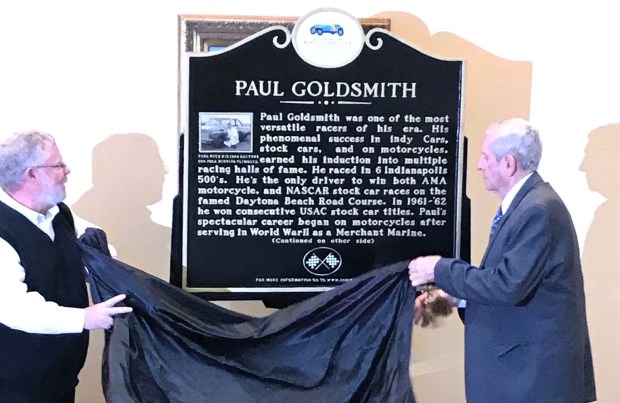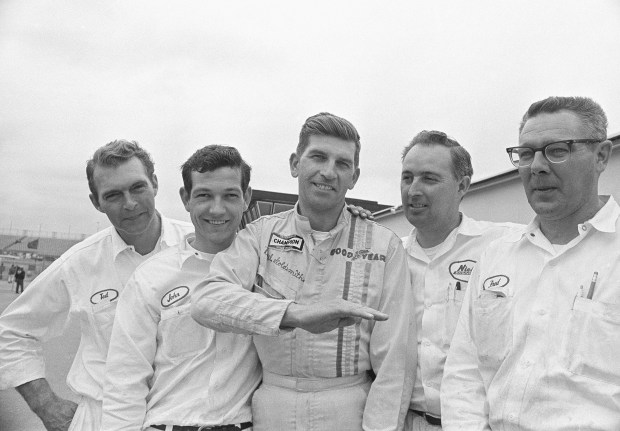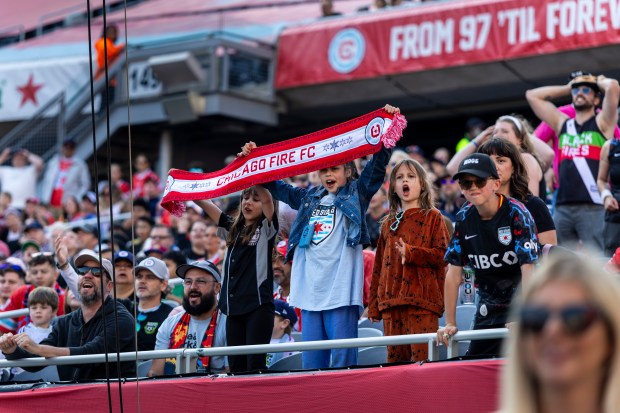If you ask his friends at Griffith/Merrillville Airport and the thousands of students he trained to be a pilot, Paul Goldsmith was a Hall of Fame flight instructor and airport mechanic.
The rest of the world knew Goldsmith as a Hall of Fame race car driver.
Goldsmith, who was 98, died on Sept. 6 in Munster.
Jim Butts, who worked with Goldsmith for over 50 years at the airport, said his knowledge and teaching skills made him one of the finest teachers around. Butts finished his tenure at the airport as a bus driver. He’d pick up the kids who were going to flight school at the airport and take them home when their day was over.
“He was the best flight instructor you could get anywhere,” Butts said.
But his national reputation was as a race car driver.
Goldsmith was the oldest living Indy 500 driver at the time of his death.

Goldsmith’s initial foray into racing was with motorcycles. He won the American Motorcycle Race in 1952 in Milwaukee on a one-mile track at the state fair. It was the first of Goldsmith’s many racing victories.
Goldsmith raced motorcycles until 1956, winning two more times, before moving into stock car racing.
In 1959, Goldsmith teamed up with Ray Nichels, a legendary Indy 500 mechanic, who had shops in Griffith and Highland, to jump-start his stock car racing skills. Nichels was one of the top auto-racing mechanics in the country.
With Nichels as his mechanic, Goldsmith dominated stock car racing in the early ’60s, winning the United States Auto Club Stock Car Championships in 1961 and 1962. Goldsmith won an incredible 26 USAC stock car races in 85 starts. He also had 44 finishes in the top three. He also won nine times in NASCAR (National Association for Stock Car Auto Racing). Goldsmith was the only driver to win on the beach course in Daytona on a motorcycle and a stock car. Goldsmith won the Daytona Beach 200 in 1954 and the Grand National Race at the beach course in a stock car in 1958.
From 1958 to 1963, Goldsmith raced in the Indy 500. His top finishes were third in 1960 and fifth in 1959.
Born in West Virginia, Goldsmith spent most of his early years in the Detroit area. After returning from World War II, where he was a Merchant Marine, Goldsmith co-owned a service station in Royal Oak, Michigan while working at a Chrysler plant.
His interest in flying was practical in his early racing days.
It was quicker to hop into a plane and pick up a part than to drive.
Craig Anderson, Vice President of Griffith Aviation, said Goldsmith got so busy he didn’t have a choice.
“He was doing testing for the auto manufacturers and tire companies,” Griffith said. “He needed to be all over the place all the time so he started using airplanes. That’s how he veered into aviation.”
Goldsmith retired from auto racing in 1969 to focus on flying. He was co-owner of the Griffith/Merrillville Airport and an aviation repair business until shortly before his death. The Gary/Chicago International Airport purchased the Griffith/Merrillville Airport for $1.8 million in December.
Goldsmith told AutoRacing1 in 2021 that his “greatest moment” wasn’t racing cars but learning to fly. Goldsmith got hooked on flying when he lived in Detroit after a flight instructor he knew took him on a few flights. Goldsmith had piloted a plane as recently as three years ago.
Goldsmith opened Griffith Aviation in 1984. Until then, he had kept his plane in a hangar at the Griffith Airport and running his repair business there.
At his core, Goldsmith was a world-class mechanic. It didn’t matter if it was a car or an airplane.
He could fix it.
Goldsmith was often flying damaged planes back to Griffith to fix.
Those flights could get complicated.
More than once, according to Butts, Goldsmith flew a plane back to Griffith with one engine.
He said one time Goldsmith was flying a plane from Michigan that had a carburetor blow out midair. Goldsmith was too far into his flight to turn around. He piloted it over Lake Michigan back to Griffith.
“He was rattling and banging around but he got it back,” Butts said.
Butts said his training as a race car driver helped him stay composed when a mechanical problem popped up while he was flying.
“When you blow an engine, it’s a frightening affair,” Butts said. “But Paul would just keep flying around. He was able to figure out the problem in the air.”
For years, Goldsmith didn’t talk much about his driving exploits. He was humble and hard-working. He wanted to focus on his aviation career.
“He was shy,” Anderson said. “He got tired of all the attention and the limelight.”
Goldsmith started opening up about his racing career the last 15 years, according to Anderson, because he wanted to help racing historians accurately tell his story.
Goldsmith was inducted into the Indianapolis Motor Speedway Hall of Fame, the Motorsports Hall of Fame of America, the Motorcyle Hall of Fame, the USAC Hall of Fame and Michigan Motorsports Hall of Fame.
William LaDow, a Valparaiso racing journalist, said Goldsmith, along with Nichels, were local legends.
“I don’t think I’ve met anyone as humble as Paul in that arena in the 60s. He was the silent, strong force behind myriad racing innovations, and his impact is so far-reaching, no one really understands how much he’s done,” LaDow said. “He and Ray were always looking for new challenges, and everyone benefited from it.”
LaDow said he believes there isn’t a racing Hall of Fame in North America in which Goldsmith shouldn’t be included.
“When it comes to racing, be it motorcycles or cars, Paul was one of the most influential people between 1958 and 1970,” LaDow said. “In 1958, the general manager of General Motors’s Pontiac division introduced Paul and Ray Nichels because he wanted them to improve Pontiac’s stock car sales, which they did terrifically: GM rose to third in sales, and then they did the same for Chrysler in 1963.”
Goldsmith’s family is holding a memorial service for him from 2 to 6 p.m. Tuesday at Griffith Aviation, located at 1705 E. Main St.
Freelance reporter Michelle L. Quinn contributed.
Mike Hutton is a freelance reporter and columnist for the Post-Tribune.




